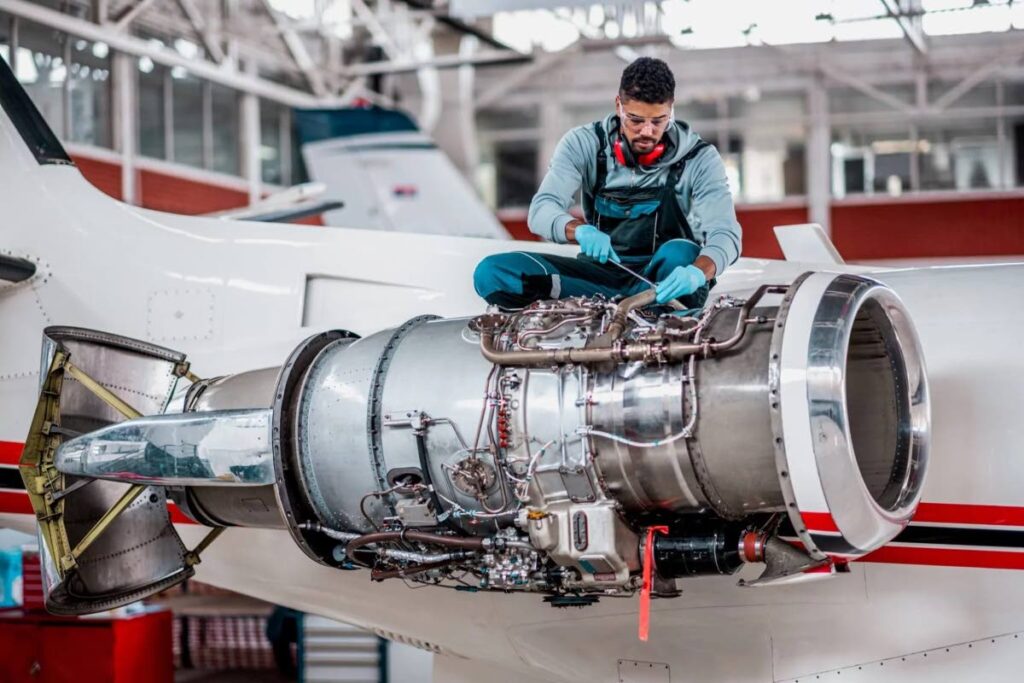Aircraft maintenance

Part I
The aviation industry is highly regulated in accordance with international safety standards. The regulatory process begins with the design, manufacture and certification of an aircraft and continues throughout the life of the aircraft.
An approved maintenance programme ensures that an aircraft continues to be airworthy throughout its lifecycle by a process called “continuing airworthiness,” which captures the wear and tear on the aircraft. It is an integral component of the process.
The maintenance programme is a document containing the minimum maintenance requirements for an aircraft to ensure its continuing airworthiness, and is prepared from a Maintenance Review Board (MRB) Report.
The membership of the MRB consists of the aircraft manufacturer, airworthiness authorities, operators and industry specialists. The MRB is a standardised process used as an acceptable means of compliance to develop scheduled maintenance instructions, thus ensuring the objectives of an efficient aircraft maintenance programme.
The MRB report is approved by the state of design of the aircraft and contains maintenance tasks to be accomplished on the aircraft for continuing airworthiness.
The tasks are categorised into aircraft inspections for damage, replacement of time expired or damaged parts, servicing of oils and fluids and system functional checks. All tasks are listed in tabular form with the intervals for accomplishing the tasks such as flying hours, landing and takeoff cycles or calendar time.
The intervals are determined by computer modelling and probabilities that predict when components or structural parts are likely to fail so that preventive maintenance action can be taken.
The numbered task cards contain the detailed instructions for accomplishing the maintenance task in accordance with the procedures contained in the aircraft's approved maintenance manuals. Task cards also list all the specialist tools and materials required for the maintenance tasks.
For convenience, airlines prepare a maintenance schedule that groups maintenance tasks into categories such as an in-transit check, a turnaround check, an overnight check and lettered checks such as A, B, C and D. Of the lettered checks, the D-checks have the highest work content and the A-checks have the lowest work content.

For the purpose of maintenance opportunities, D-checks, which mainly consist of structural inspections, are segmented and integrated into the C-check group. Likewise, B-checks have been segmented and integrated into the A-check group.
The maintenance schedule must be approved by the airworthiness authorities of the state which issued the airline’s air operator’s certificate (AOC).
Maintenance activities such as those in a C-check are further classified as routine tasks – which are tasks that originate from the maintenance schedule – and non-routine tasks, which are tasks generated by a routine task. For example, if a hydraulic leak is discovered during the routine task of inspect the aircraft's landing-gear system for damage and hydraulic leaks, a non-routine task card is raised that records the hydraulic leak and its location and task-card number are recorded in an “accountable log.”
All maintenance tasks are carried out by trained and qualified personnel. Every task, when completed, must state the corrective action taken and quote the maintenance manual reference where applicable. The task card must be signed by the "done by” personnel and the "check by" personnel.
Before the aircraft can be released for service, all routine and non-routine task cards are checked by an independent quality auditor to ensure the applicability, relevance and completeness of the maintenance actions taken. Likewise, the accountability log is used to track all routine and non-routine tasks cards.
On the satisfactory completion of the maintenance check, a duly authorised and qualified maintenance engineer will certify that the aircraft is airworthy for service.
Most airlines have a reliability engineering unit which does post-check reviews of maintenance checks to identify and analyse unusual defect trends. The results of the analysis will inform adjustments to the maintenance programme, which must be approved by the airworthiness-authorities after reviewing the justification or the adjustment.
Depending on the significance and severity of the analysis findings, the airline is required to inform the aircraft manufacturer for further research and investigations.
The manufacturer will collate defect trend inputs from all operators by aircraft type for analysis and investigations. The manufacturer will then determine preventive actions and issue service bulletins (SB) for modifications, additional inspections or a change to the operating procedures.
The service bulletins must be co-ordinated by the state of design, which, if it considers the issue significant to safety, will issue an airworthiness directive (AD) mandating compliance with the requirements of the SB.
The intent of all ADs must be incorporated into the maintenance programme and approved by the local airworthiness authorities.
An aircraft cannot operate without an airworthiness certificate issued by the local authorities. The certificate is valid for a year. Before renewing the certificate, the local authorities will inspect the aircraft and examine all the records for compliance with all maintenance requirements.


Comments
"Aircraft maintenance"